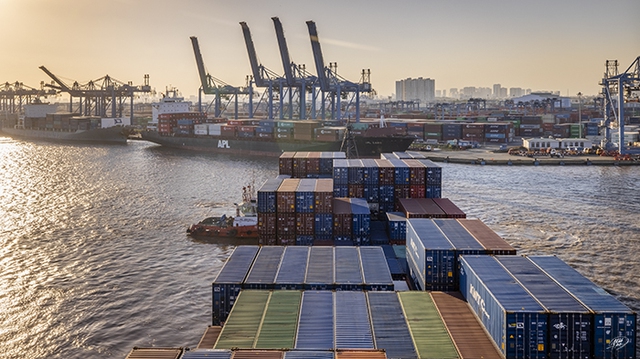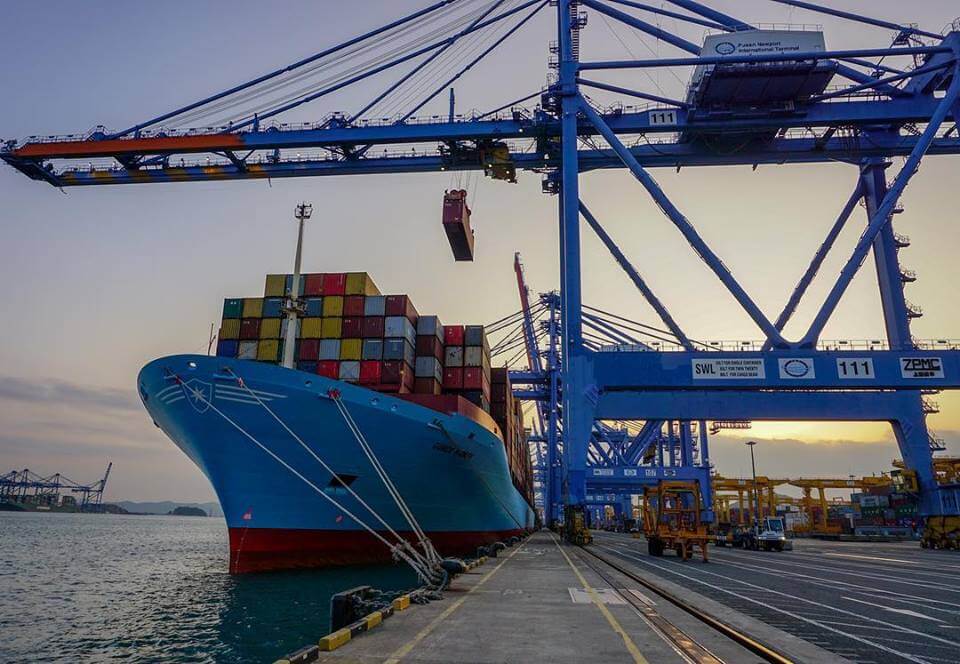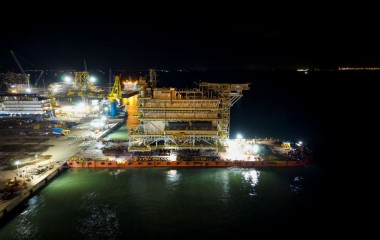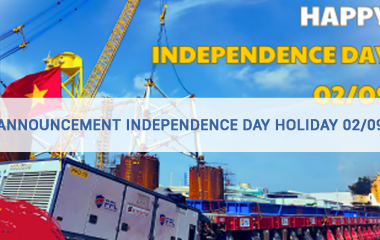How high is the logistics cost in Vietnam?
North – South freight rates are even higher than going to the US
A representative of a retailer who used to bring Vietnamese mangoes to a supermarket system in Japan said that the quality of Vietnamese mangoes is equivalent to that of Thai and Filipino mangoes, but when brought to the retail system in Japan, the selling price of one fruit is limited. Vietnamese mangoes are nearly 20% more expensive than Thai and Filipino mangoes. Since then, the amount of Vietnamese mangoes exported and consumed in Japan is not high.

Logistics costs are eroding profits, reducing the competitive advantage of Vietnamese goods
The story is not new. In export, Vietnamese goods are suffering too much logistics costs such as domestic freight, fees and transport surcharges charged by foreign shipping lines higher than the prescribed level… This pushes Vietnamese export goods to stay in place. so it’s even more difficult. Ms. Nguyen Anh, a representative of a foreign logistics company in Ho Chi Minh City, said that compared to this time last year, the cost of “booking” ships from abroad has not changed, but the fee for booking foreign ships from within the country has not changed. water increased by 10%. In addition, domestic freight charges by the end of June this year are still quite high, pushing up the cost of export goods.
Specifically, domestic freight rates increased by 15-20% compared to last year. Domestic container trucks, transporting goods from the factory to the port or vice versa, within a radius of 100 km, the freight rate a year ago was at the lowest level of about 2.2 million VND, now has increased to 2.5 – 2.6 million copper. However, Ms. Nguyen Anh also added that due to a sharp drop in export orders, the number of customers “booking” ships at the company decreased by about 60% compared to last year. Not only domestic freight, container lifting/lowering fee instead of 30 USD/container has now increased to 45 USD. Ms. Nguyen Anh said: “The fee for lifting / lowering the container is high by shipping lines, which is contributing to pushing the cost of import and export goods higher.”
Foreign shipping lines benefit greatly
A representative of the Association of Brokerage Agents and Maritime Services said that nearly 100% of Vietnam’s import and export volume is handled by foreign shipping lines. When shipping lines want to adjust fees and surcharges, they only need to list the price changes 15 days before the time of price adjustment and do not have to check and explain the components of fees and surcharges (according to the regulations). Decree 146/2016 on listing prices and surcharges in addition to the price of container freight services by sea, service prices at seaports).
Up to now, the shipping line is collecting a high loading and unloading surcharge at the port but returning it to the port at a very low level. Besides, the container yard (depot) has a very strong discount, up to 50-60% of the lifting/lowering price, while this fee is not related to shipping lines. Thus, logistics costs at the port that import-export businesses have to pay are very high, but mainly in the pockets of foreign shipping lines. Mr. Nguyen Ly Truong An proposed: “There should be a solution to control the delivery and delivery costs of foreign shipping lines, avoid loss of state budget revenue and regain a legitimate source of revenue for port businesses to have resources. reinvestment”.
Worth mentioning, at this time last year, the domestic gasoline price was 33,000 VND/liter, this year it dropped to 22,000 VND/liter. Mr. Nguyen Ly Truong An, import-export expert, deputy director of SeaAir Global, commented that freight rates dropped a bit at the end of the year and then increased again soon after. “Despite the sharp drop in gasoline prices, transport businesses that have increased, will never decline according to the price of gasoline,” Mr. An said and added: Currently, the freight rate for sea freight is 1 container from a port in Vietnam. Going to the east coast of the US is about 2,300 USD, from Vietnam to the west coast of the US about 2,000 USD.
Meanwhile, a container carrying goods from the North to the South, the transport unit quoted a price of 55 million VND (equivalent to about 2,300 USD). “If the value-added tax is included, this freight costs more than 2,600 USD, higher than the cost of 1 container of goods exported to the US. It’s too strange. Recently, I also referred to freight transport by rail, the price is much cheaper, but the problem is that the security for the goods is not guaranteed.In addition, the routes are not flexible, so the export goods are still dependent on domestic transportation by water or road mainly. Railways only transport retail goods,” said Mr. Nguyen Ly Truong An.
Big “barrier” for exports
According to some statistics of furniture exporters, logistics costs in general “hit” on 1 export wooden container account for 20-30% of the total value of the shipment. For example, the shipment is worth from 20,000 – 30,000 USD, the logistics cost is up to 4,000 – 9,000 USD. The logistics cost of Vietnam’s textile and garment is currently 6% higher than Thailand, 7% higher than China, 12% Malaysia and 3 times higher than Singapore.

Data from the Vietnam Logistics Services Association (VLA) also shows that logistics costs compared to Vietnam’s gross domestic product (GDP) are at 16.8%, while the world average is 10.7 %. In the ASEAN region, Vietnam’s logistics costs are higher than those of Singapore (at 8.5%), Malaysia (13%) and Thailand (15.5%). Chairman of the Vietnam Textile and Apparel Association, Mr. Vu Duc Giang commented that in the context of textile and garment exports being too difficult, the higher logistics costs in Vietnam make it difficult for businesses to compete with goods exported from countries in the region and the region. erode all profits, in addition, it also becomes an obstacle for businesses when entering new markets, especially during this time many exporters are trying to find new markets.
Currently, sea freight for 1 container of goods from a port in Vietnam to the east coast of the US is about 2,300 USD, from Vietnam to the west coast of the US is about 2,000 USD. Meanwhile, a container carrying goods from the North to the South, the transport unit quoted a price of 55 million VND (equivalent to about 2,300 USD). If value-added tax is included, this freight costs more than 2,600 USD, higher than the cost of 1 container of goods exported to the US.
Mr. Nguyen Ly Truong An, Deputy Director of SeaAir Global Company
Sharing the same opinion, import-export expert Nguyen Ly Truong An said that many exporters said that it was difficult for them to compete on price when finding ways to expand the market during difficult times, especially with garments and footwear… Mr. analysis: High domestic freight charges will lead to 2 trends: higher prices of exported goods, reducing the competitive position of goods from Vietnam; Vietnamese exporters will choose EXW (delivery at the factory or ex-factory price) instead of FOB (price is loaded on deck at the port) to avoid domestic freight. But if doing so, businesses will lose a lot of profits, and at the same time, goods will lose their “home ground” position.
“During difficulties, everywhere you go, you can see orders “dropping” like figs, but the costs go up, it’s difficult to accept. The structure to create domestic charges currently includes the cost of tolls and roads, and the price of gasoline. high oil prices and costs incurred outside the channel when the goods are transported to the province.If determining the cause from these 3 types of costs, the export support will depend on that.In my opinion, the price of petrol has dropped sharply, businesses The transport industry needs to pay the freight rates back to reality. Next is to review the types of tolls to see which areas are unreasonable and which costs are causing difficulties for businesses. An emphasized.
Related Posts
New Posts
- NOTICE OF NATIONAL DAY HOLIDAY – SEPTEMBER 2ND PROUD TO BE VIETNAMESE
- PPL successfully performs site-move and load-out of record-breaking 4,000-ton offshore substation topside fabricated by PV Shipyard
- HOLIDAY ANNOUNCEMENT: REUNIFICATION DAY & INTERNATIONAL LABOR DAY (April 30 - May 1, 2025)
- ANNOUNCEMENT OF HUNG KINGS’ COMMEMORATION DAY 2025
- PTSC Thanh Hoa and PPL Sign Strategic Partnership
- INDEPENDENCE DAY HOLIDAY ANNOUCEMENT

_cr_380x240.jpg)


_cr_380x240.png)


Comments